Original author: LSTMaximalist
Compiled by Odaily Planet Daily Ethan ( @ethanzhang_web3 )
Editors note: The 2025 tariff policy is sweeping the world, and the crypto market is experiencing a double-edged sword - liquidity is tightened and mining costs are soaring in the short term, but in the long term, Bitcoin may transform from a risk player to a value-preserving king. LSTMaximalists latest article Tariffs, Trade Wars, and Bitcoin: How the New Macro Order Shapes Crypto deeply analyzes how tariffs reshape the market landscape and shows you the potential for Bitcoin to rise in the wave of de-dollarization.
The following content is translated by Odaily Planet Daily. In order to facilitate readers understanding, certain adjustments have been made to the original text.

summary
The Trump administrations re-imposition of tariffs in 2025 is changing the global economic landscape, and the impact on the digital asset market is particularly evident. Tariffs are intended to protect local industries, but the second and third order effects they bring affect financial markets, monetary policy, global capital flows, and technology supply chains, all of which are closely related to the crypto economy. This report will analyze in depth how tariffs affect the crypto market, focusing on liquidity, mining economics, capital flows, currency fragmentation, and Bitcoins new role in the global financial order.
1. Background: “American Ponzi” and global capital flows
After World War II, the United States created a self-reinforcing economic cycle: foreign countries exported goods to the United States, and the dollar surplus earned was invested in American assets (treasury bonds, stocks, and real estate), which lowered yields and pushed up asset prices. This cycle supported credit expansion, consumption growth, and asset inflation, making the dollar the worlds top reserve currency.
However, excessive fiscal spending during the COVID-19 pandemic, aggressive loose monetary policy, and rising national debt levels have disrupted the stability of this system. The Trump administration has restarted tariffs in an attempt to force restart the system, but this may shake the core mechanism that maintains this Ponzi game.
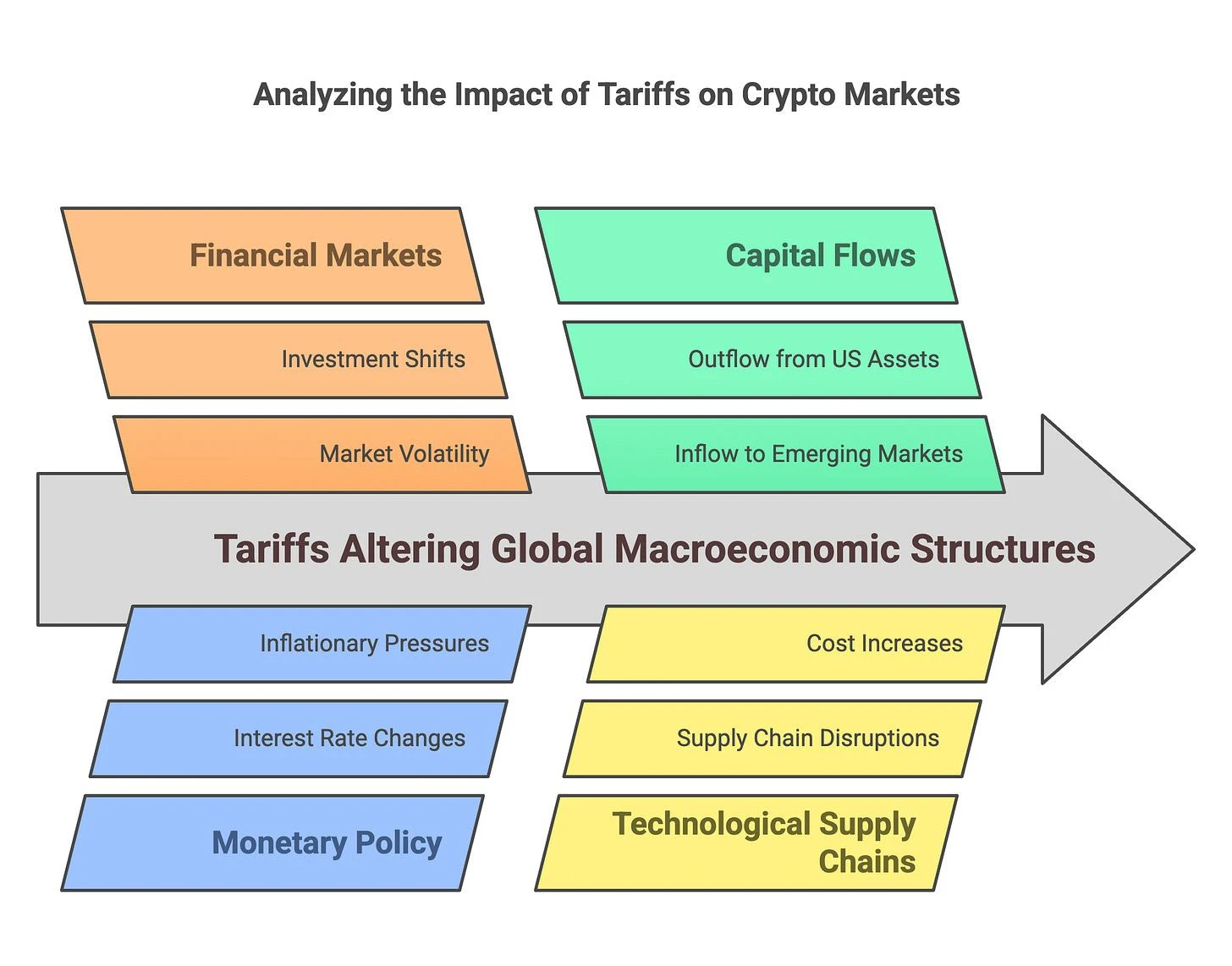
The impact of tariffs on the crypto market
How it works:
Tariffs reduce the dollar surplus of foreign exporters.
With smaller surpluses, there is less money to invest in U.S. assets.
In the past, U.S. asset prices were supported by foreign funds, but now they have to rely on fundamentals (earnings, growth) to prove themselves.
Disturbances in liquidity channels affect all asset classes, including the crypto market.
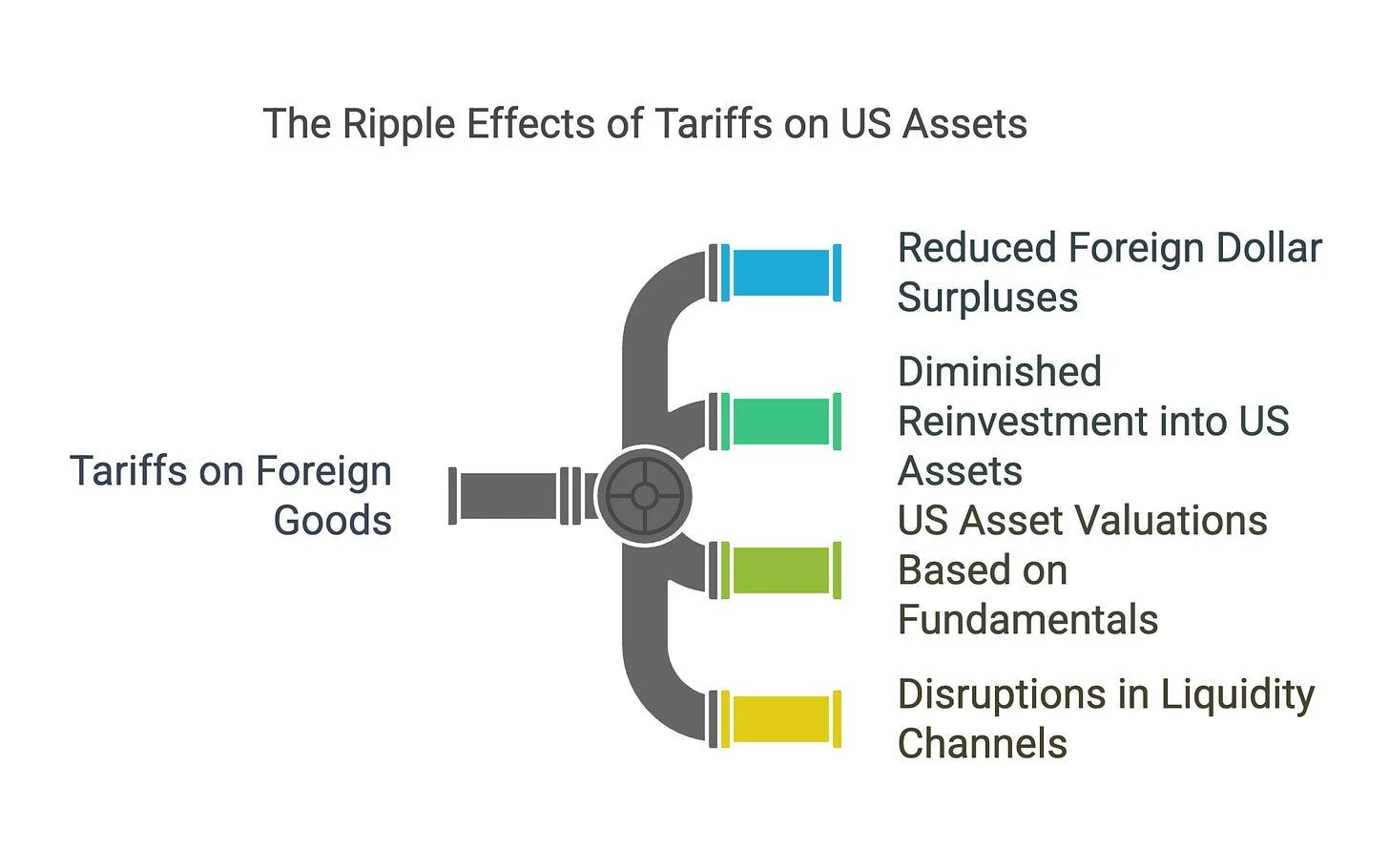
The knock-on effects of tariffs on U.S. assets
2. Short-term impact: liquidity shock and sentiment shift
Liquidity loss under risk aversion : Tariffs have triggered global risk aversion, and the market has lowered its growth expectations. As a highly volatile asset, Bitcoin (BTC) was initially negatively correlated with the stock market under this liquidity shock. After Trumps tariff policy was announced in April 2025, Bitcoin fell by about 8% in a single day, once reaching $81,000.
Rising mining costs : Tariffs on Chinese mining hardware (ASICs, GPUs, semiconductors) have increased capital expenditures for mining equipment.
Model prediction : If ASIC costs increase by 10%, mining profit margins may shrink by 6-8% if energy costs and network difficulty remain unchanged.
Elasticity impact : High costs may drive away marginal miners, slow computing power growth, and tighten mining economics.
Semiconductor supply chain pressures : Tariffs on key chip components disrupt production of next-generation mining hardware, potentially delaying computing power expansion and exacerbating concentration risks in mining centers.
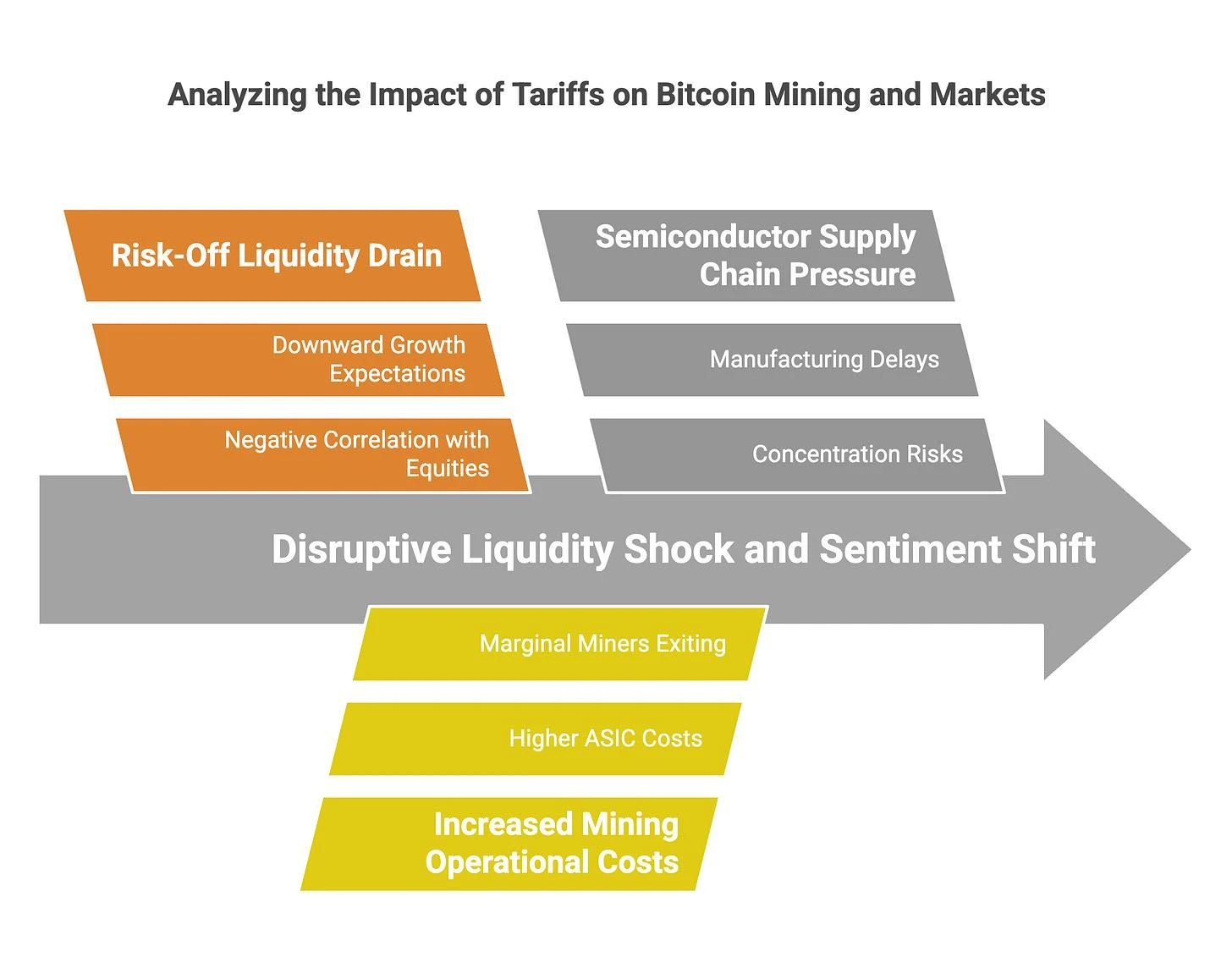
The impact of tariffs on BTC mining and markets
3. Medium-term impact: monetary system restructuring and cryptocurrency
Fed policy becomes a catalyst for Bitcoin : If tariffs drag down GDP growth but do not reignite inflation (due to reduced consumption rather than supply shocks), the Fed may shift to an accommodative (i.e. dovish) policy.
How it works : Rate cuts expand liquidity and reduce real yields, which has historically been good for Bitcoin prices (negative real rates boost non-yielding assets).
Observation : As of the end of March, spot BTC ETFs had a net inflow of approximately $600 million year-to-date, indicating that demand remained stable despite tariff fluctuations.
Weaponization of trade infrastructure : Trade sanctions and tariffs accelerate the trend towards de-dollarization.
Empirical data:
China and Russia use digital assets such as Bitcoin to settle energy transactions.
Bolivia explores cryptocurrency for energy imports.
Frances EDF is considering using Bitcoin mining to generate cash for export.
Global capital reallocation : Foreign countries reduce their purchases of US Treasuries, and long-term assets (stocks, bonds) are under pressure. In this case, non-sovereign assets such as Bitcoin may attract liquidity seeking alternative reserves.
These initiatives validate Bitcoin’s value as a neutral settlement layer, free from sovereign interference.
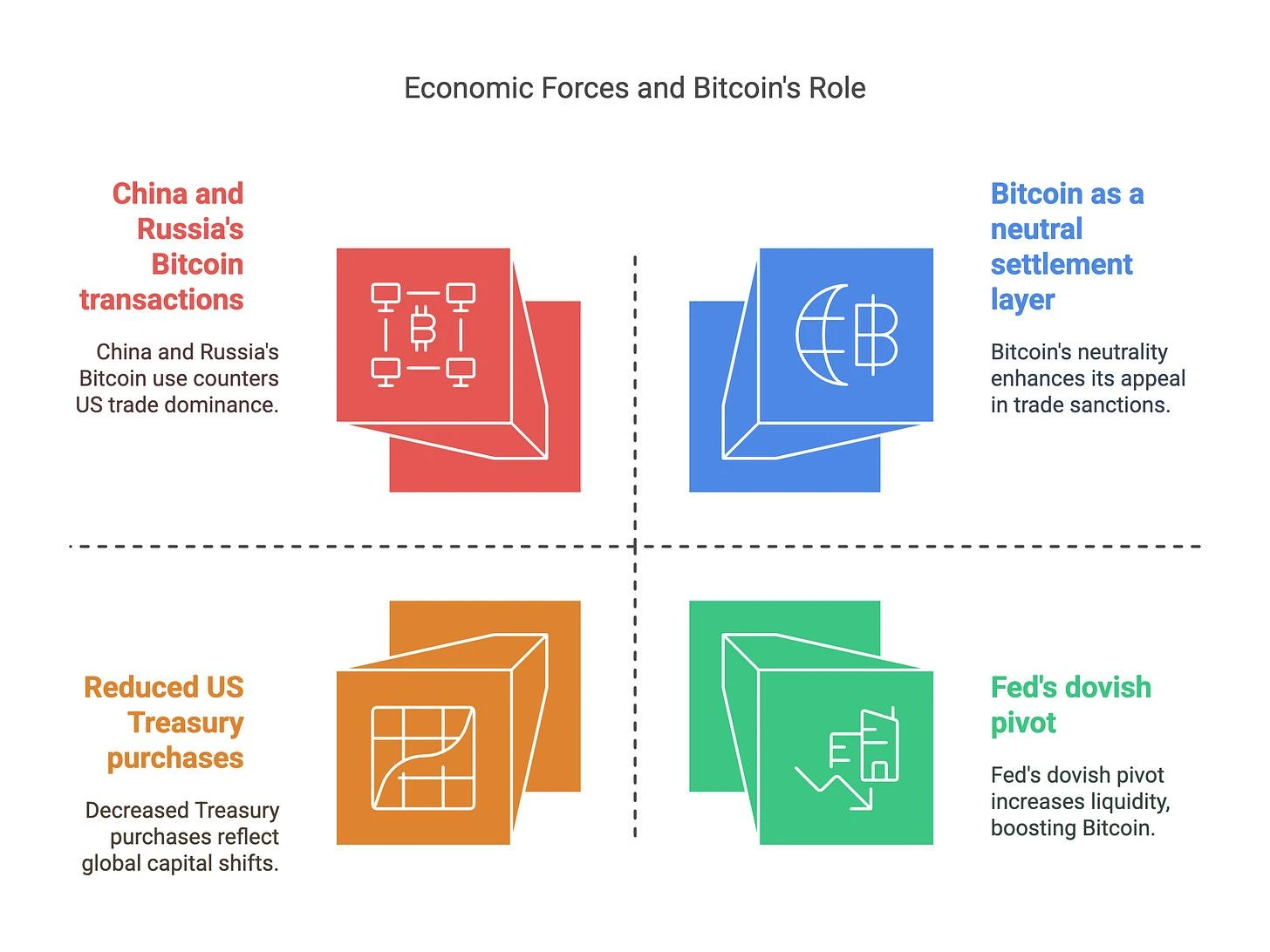
Economic forces and the role of BTC
4. Long-term impact: Bitcoin becomes a channel for monetary sovereignty
Inflation hedging and fiat currency depreciation : If trade disputes weaken the purchasing power of fiat currencies in the long term, the use of Bitcoin as an inflation hedge may increase.
Historical analogy:
Argentina and Türkiye saw a surge in LocalBitcoins usage as their currencies collapsed.
Golds performance after the collapse of the Bretton Woods system.
Evolution from risk asset to reserve asset: Bitcoin’s performance depends on the path
If sovereign currency instability becomes the norm, Bitcoins volatility relative to fiat currency may decrease, attracting institutional allocations.
Key Metrics:
Volatility converges compared to the stock market.
The correlation with Treasury Inflation-Protected Securities (TIPS) has increased.
Pilot allocations for national treasuries and sovereign wealth funds.
Multipolar monetary system and Bitcoin settlement layer : The disintegration of the US-dominated trade structure has given rise to alternative cross-border settlement layers. Bitcoin has unique advantages due to its decentralization and anti-censorship properties.
Potential trends:
Central banks around the world hold Bitcoin as a hedge tool for reserve diversification.
Energy exporting countries prefer to use Bitcoin for settlement to avoid exposure to US dollar risks.
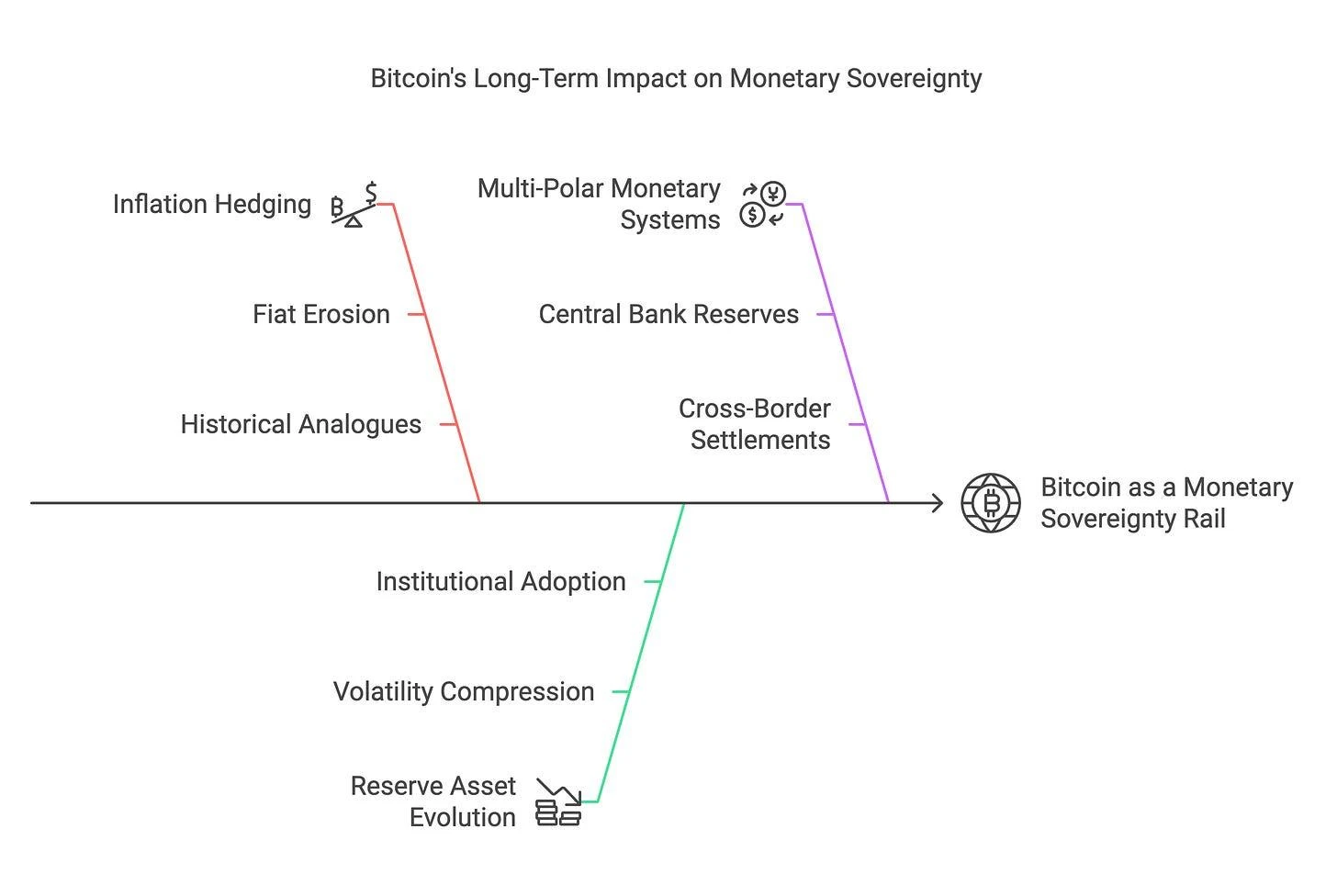
BTCs long-term impact on monetary sovereignty
5. Key indicators that investors should pay attention to
Federal Reserve interest rate outlook: Changes in the federal funds futures curve.
US Dollar Index (DXY) Movement: Continued weakness is good for Bitcoin.
BTC ETF net inflows: reflecting institutional interest.
On-chain data: coin holder behavior, whale accumulation, and exchange reserves.
Global trade policy escalation: pay attention to retaliatory measures from the EU and China.
Sovereign Bitcoin Settlement: Focuses on Bitcoin transaction events confirmed by national entities.
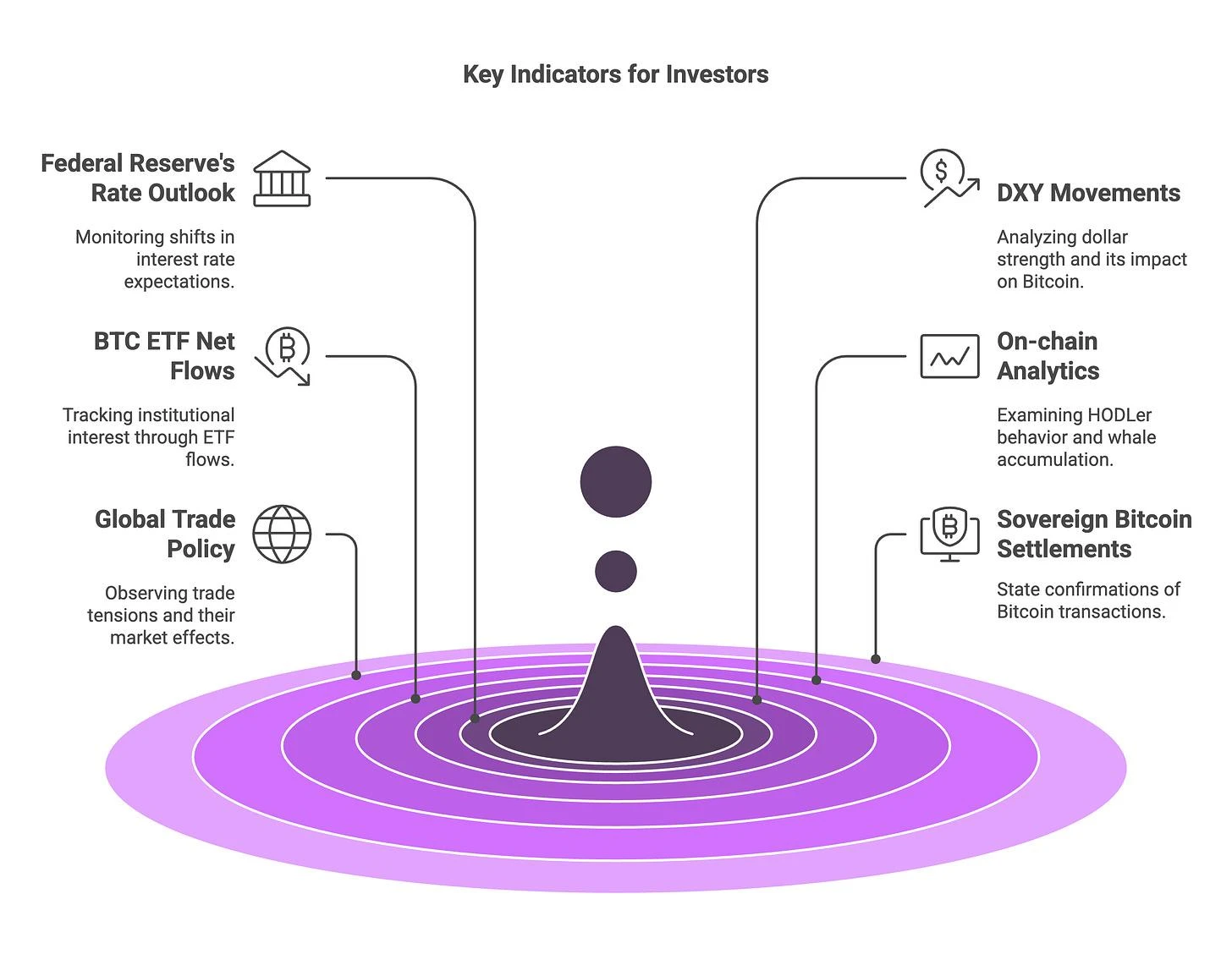
Key Investment Indicators
6. Conclusion: A new monetary paradigm?
Tariffs are ostensibly aimed at trade balance and industrial protection, but their chain reactions touch every corner of the global capital market. For the crypto market, tariffs are not only a short-term risk event, but are also likely to catalyze a major restructuring of the global financial track.
As economic nationalism, trade fragmentation, and de-dollarization accelerate, the crypto-native idea of Bitcoin as a neutral currency is becoming less far-fetched. In a multipolar world of financial division, Bitcoin as a sovereign neutral reserve asset and energy settlement layer can not only survive, but also thrive.
Investors, miners, and protocol developers should adjust their strategies to adapt to this era where liquidity flows, monetary credibility, and sovereign trust are being redefined.










